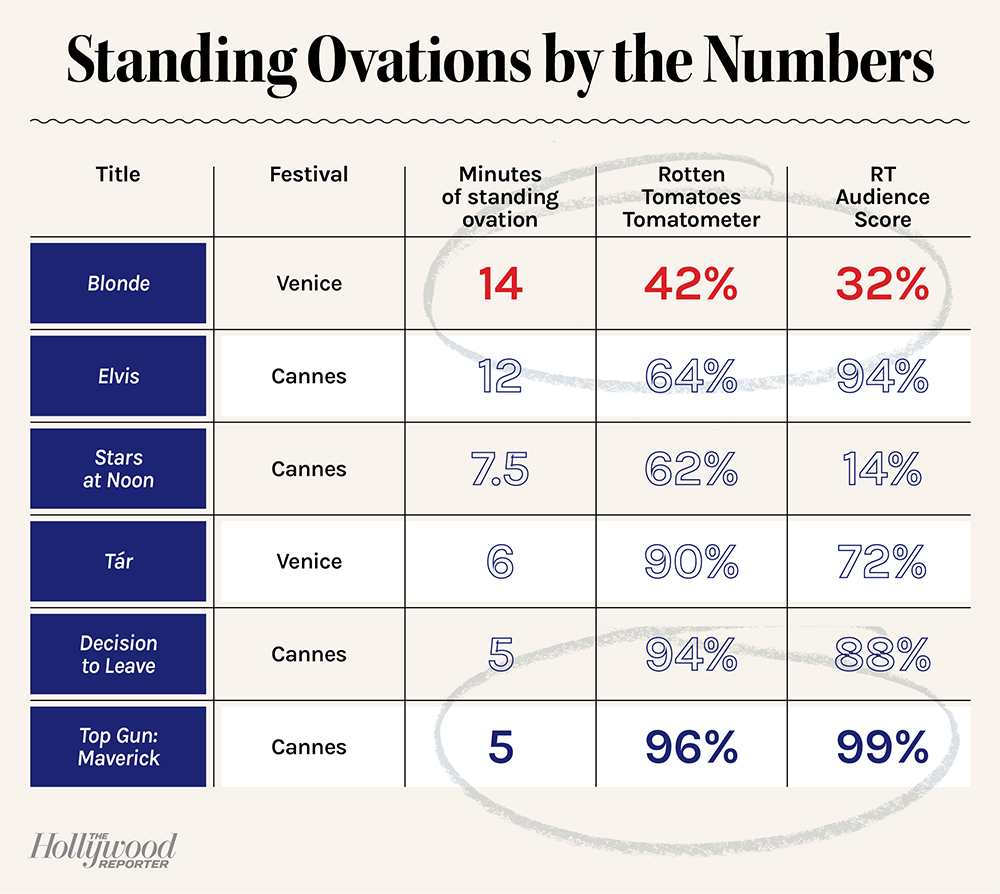
When is a standing ovation actually over? Does it come down to the last person clapping or some vague tipping point when most of the crowd seems to have returned to their seats? Such questions took on bizarre urgency in 2022 thanks to the growing prevalence of a niche reporting practice increasingly loathed throughout the industry: the timing, reporting and amplifying on social media of the “precise” length of standing ovations after movie premieres at prestigious film festivals.
Long a staple of Cannes coverage, where the standing O is an institution, the practice spread to Venice, Toronto and elsewhere in 2022, causing consternation on both Film Twitter and IRL. Critics hate it because it supplants their nuanced opinions with a single, mystifying data point. Artists, studios and publicists aren’t fans because it gives them just one more thing to panic about as their movie finally meets its first audience. But most of all, no one seems to like it — except, maybe, the star who’s just basked in an especially long ovation — because the length of applause at a premiere tends to mean precisely nothing.
Premieres are usually packed with a strange mix of glamour-focused European socialites, reporters, hangers-on and the large teams of people actually responsible for the film’s creation — how long this peculiar claque happens to applaud on any given night tells you very little about the artistic accomplishment onscreen (especially when Brad Pitt happens to be in the audience, waving his arms and encouraging the crowd to keep roaring, as he did at the Venice premiere of Andrew Dominik’s critically maligned Marilyn Monroe biopic, Blonde, which Pitt’s Plan B produced).
Could 2023 be the year when the industry finally forswears the standing ovation stopwatch? THR is open to a negotiated cease-fire if our fellow trades will come to the table.
This story first appeared in the Dec. 16 issue of The Hollywood Reporter magazine. Click here to subscribe.
